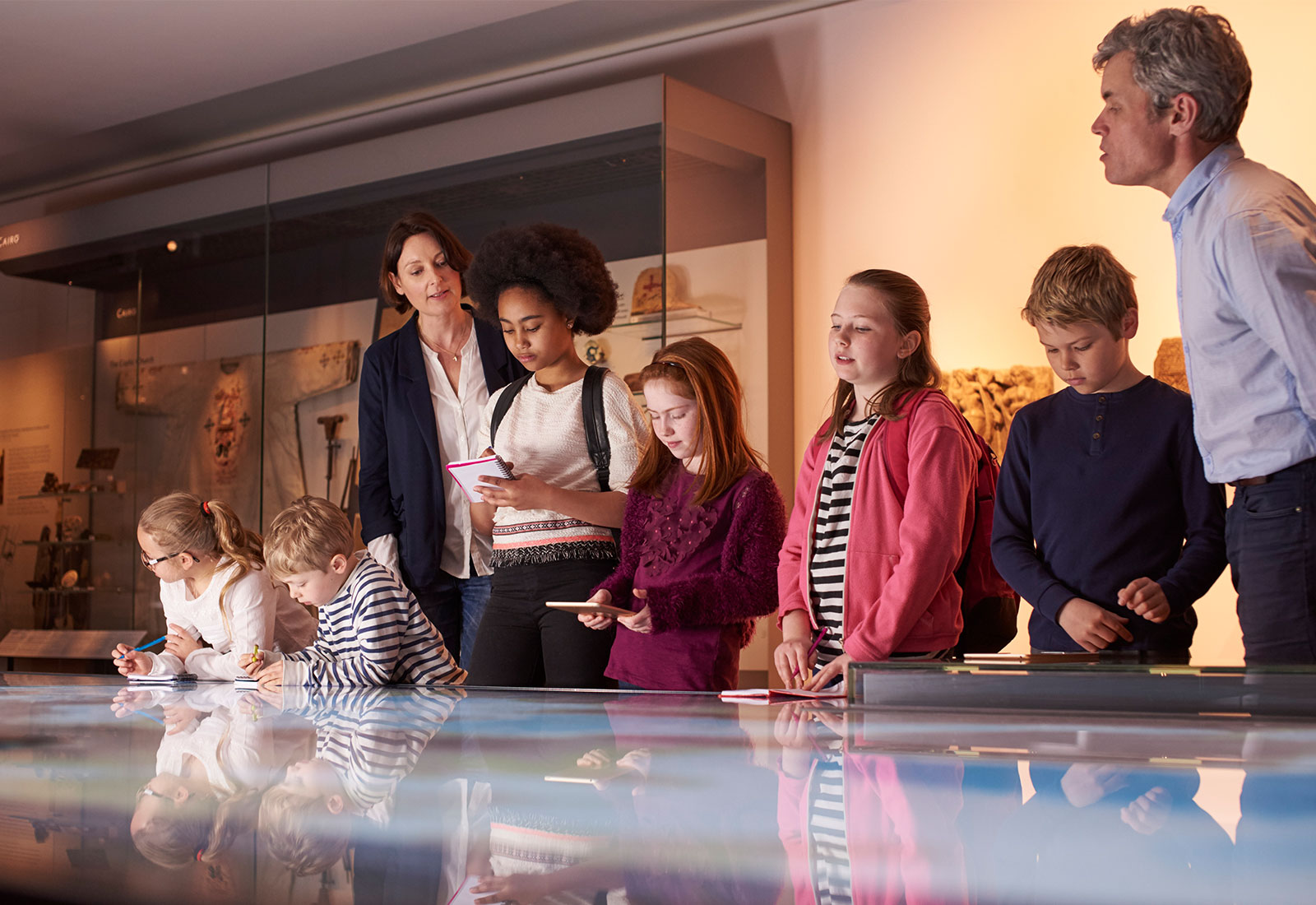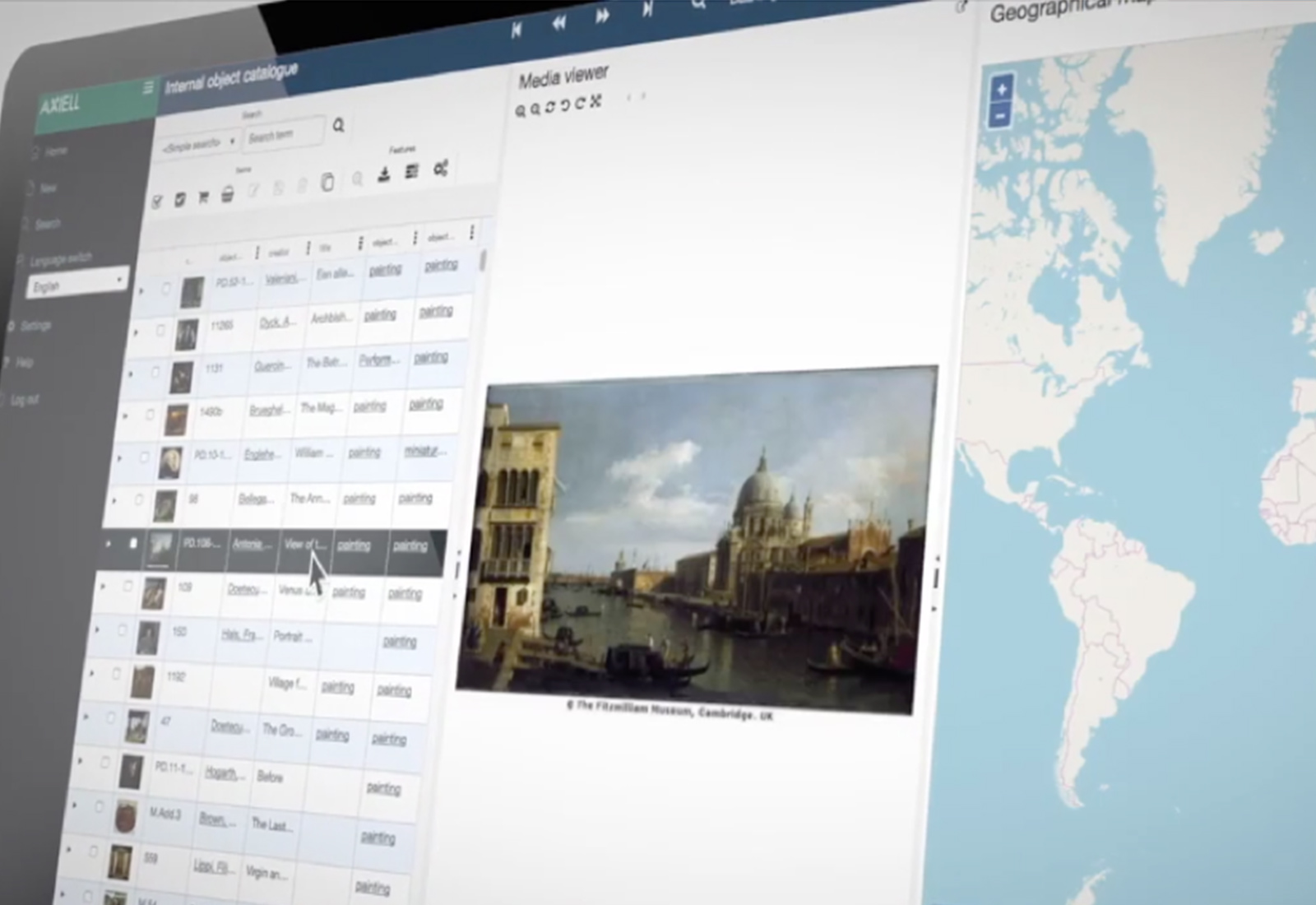New research finds widespread investment in digital-engagement tactics, ‘digital transformation is afoot’; next steps point toward improvement, integration
Lund, Sweden, 28 June 2017 – Museums have accelerated their adoption of digitization both on premise and online to better attract, build and engage their audiences, according to new research by Axiell, the leading vendor globally of collections management software to archives and museums.
The survey, conducted in partnership with Museums and the Web, tapped 125 decision-makers from institutions worldwide, spanning museum leadership, curatorial and sales staff, digital information managers and IT. Results point to the growing use of digital tactics by institutions to engage audiences but also the need for a more comprehensive strategy to manage, integrate and deliver digital content across platforms.
“The digital transformation of museums, libraries and archives is afoot,” said Adam Schatz, Managing Director, Axiell ALM. “Our findings show a great majority of institutions are in the process of digitizing their collections and that strong progress has been made on this front since our 2015 and 2016 surveys.
“The question now is how to integrate these digitization efforts within an overarching digital strategy that advances the institution’s philanthropic and fiscal goals. Success will hinge on creating a robust cross-platform experience that will drive long-term, sustainable engagement with an institution’s diverse audiences. Delivering this compelling cross-platform experience will necessitate greater investment in technologies that manage digital content over time more efficiently, more easily, and with fewer resources.”
Following are key findings from the survey:
- Institutions Progressing with Their Digital Strategies: Two years ago, 60% of respondents stated that their digital strategy was in development, compared with 39% today, signalling the growing shift from thinking about digitization to “doing” it.
- Institutions Adopting Digital Strategies to Drive Engagement: The majority of institutions surveyed have adopted some type of digital engagement platform, with online access to programs and activities being the most common at more than 80%. A growing number of institutions are making their collections available online as well, with 22% stating that their entire collection is now online; 28% saying more than half their collection is online; and another 38.3% indicating that less than half their collection is online. Only 14% stated that their collection was not available at all online.
- Mobility in the Mix (but Not as Much, or as Well, as Needed): Engaging visitors via their personal mobile devices is a growing priority at institutions, but only 3% of institutions say that they are satisfied with their current mobile solution. A complete tour can now be taken using a visitor’s smart phone or tablet at 26% of the institutions surveyed, while an additional 19% supplement their museum tours with content developed for smartphones and tablets. The embrace of mobility by institutions is underscored by the finding that 36% of museums are actively increasing their investment in mobile engagement.
- “More Efficiency, Please”: Managing and Presenting Content: While 56% of respondents signalled that their institutions are making strides towards managing their collections more efficiently and presenting them more consistently across digital and physical domains, more than 66% agreed that the process could be improved.
- E-commerce: More to Come: While nearly 50% of respondents said that their institution has an e-commerce store, only 3% indicated that the merchandise found there is connected to the online collection. That said, 30% thought making such a connection could be of interest.
“Short term, we see great opportunity for institutions to continue digitizing their collections, working to deliver a seamless and enjoyable experience for visitors across platforms, no matter how they choose to engage,” concluded Schatz. “This presents possibilities to improve the experience and accessibility for visitors and researchers, advance the educational mission of institutions, and benefit the institution’s bottom line, impacting everything from how a museum gift shop sells online to how an individual experiences an exhibition anywhere in the world. Longer term, we are looking to help our customers across the globe navigate these complex changes and realise their vision for their institution through an approach combining the best in strategy and technology.”
“Perhaps the greatest opportunity of digitization for museums is measuring our impact on audiences and mission,” said Nancy Proctor, Co-chair of MW Conferences and Axiell’s partner in the digital strategies survey. “Surveys such as this one, now issued in two consecutive years by Axiell and MW, are therefore critical tools for creating benchmarks that enable the field to reflect on their progress over time and around the world. Going forward,” Proctor adds, “we’d like to use instruments like this both to measure and encourage increased use of digital tools for accessibility and inclusivity, as well as for evaluation.”
Survey results can be found here.
For more information:
Christina Leahy, Director of Marketing at Axiell ALM
Christina.leahy@axiell.com
About Axiell
Axiell serves libraries, schools, archives, museums and authorities with technically advanced and innovative solutions developed in close cooperation with its customers in 55 countries. More than 3000 library organisations with thousands of branches use an Axiell library management system and Axiell Arena, a tool for the virtual library. The systems for archives, libraries and museums, are used by over 3400 cultural institutions over the world. In addition, more than 3000 schools use an Axiell system. The Axiell Group, headquartered in Lund, has more than 320 employees based out of 26 offices in Sweden, Australia, Abu Dhabi, Canada, Denmark, Finland, France, Germany, the Netherlands, New Zealand, the UK and the USA. Together we form one of the world’s largest companies in these sectors.
About MW
The MW (Museums and the Web) conferences convene annually in North America and Asia. Our meetings and proceedings feature advanced research and exemplary applications of digital practice for cultural, natural and scientific heritage. Formed by leading professionals from around the world, our community has been meeting since 1997, and recognising the best in cultural heritage innovation through the GLAMi (formerly Best of the Web) awards annually. More than 1200 papers from the past 20 years of MW conferences are freely accessible online and offer an unparalleled resource for museum workers, technologists, students and researchers that grows every year.




